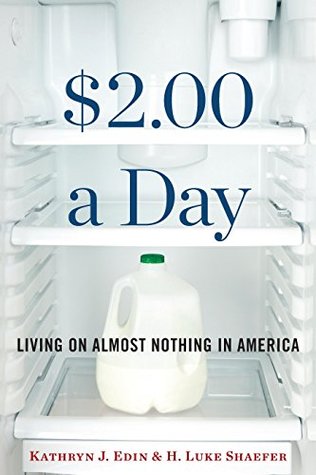More on this book
Community
Kindle Notes & Highlights
Read between
September 1 - September 18, 2020
Creating a subsidized jobs program modeled on the TANF Emergency Fund would be one way to improve the circumstances of America’s $2-a-day poor. These individuals tend to be at the end of the hiring queue for a multitude of reasons and would likely benefit from an approach targeting workers who have the greatest challenges finding work.
program that included some support services could be particularly effective.
Including a caseworker who can counsel workers when conflict arises or advocate on their behalf might make a program like this especially valuable.
work support programs could even be paired with mental health services.
The nation’s infrastructure is badly out-of-date in many places—often crumbling, sometimes downright dangerous. The National Park Service and state and local park districts are underfunded; this limits hours and upkeep. Safe, stimulating day care centers—the kind of environments our toddlers and preschoolers require to thrive—are too few. We need many more after-school programs for school-age children. There are too few tutoring programs. There is too little elder care. Our public libraries, pools, and recreation centers—vital institutions for the safety and well-being of our
...more
New research shows that when workers are treated well, they work harder and more productively, delivering value to investors and customers alike.
there is a place for investment in the building or rehabbing of more affordable housing.
Another possible avenue to increase the stock of affordable housing and decrease residential segregation is to reduce the prevalence of discriminatory “exclusionary zoning” regulations.
Providing the ultimate safety net is the role that Temporary Assistance for Needy Families is supposed to play, but it hasn’t proved to be up to the task. Part of the reason TANF isn’t doing its job is that it is a block grant given to the states, which have broad flexibility as to how they spend the money.
TANF has become welfare for the states rather than aid for families in need.
What would happen if states were incentivized to spend a far greater proportion of what they received from the federal government for the TANF program on basic cash assistance? While welfare has never been in line with America’s core values, help for the poor has.
Without cash, they can’t meaningfully participate in society. Furthermore, no American should have to resort to the lengths they must go to in order to generate that critical resource. Most Americans cringe at the idea of fellow citizens having to spend hours scrounging for aluminum cans or to take iron pills to ensure they can donate plasma twice a week—just to keep their families barely treading water.
We are not arguing here that the EITC is a solution to $2-a-day poverty. But it does offer a critical lesson in how antipoverty policy ought to be crafted. Too often, America has gone down the road of trying to shame those in need. We’ve put up barriers. We’ve made people jump through hoop after hoop—all based on the not-so-subtle presumption that they are lazy and immoral, intent on trying to put something over on the system.


